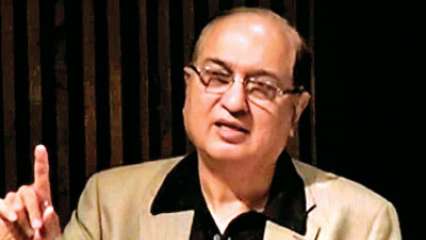ISIS shadow looms

G Parthasarathy
Former diplomat
The people of Sri Lanka have shown courage, wisdom and resilience in recovering from the traumatic effects of the brutal ethnic conflict between 1983 and 2010. An estimated 47,000 Tamil civilians, 27,000 LTTE members, 50,000 Sinhala civilians, 23,790 Sri Lankan soldiers and 1,500 members of the Indian Peace Keeping Force laid down their lives during the conflict. The conflict, however, did not affect the lives of ‘Indian Tamils’ in southern Sri Lanka, whose ancestors had migrated as plantation workers during British rule. There have, however, been recent incidents of religious tensions between the Sinhala Buddhist clergy and radicalised elements in the Muslim minority. Sri Lanka’s relatively small Christian minority, which is peaceful and relatively affluent, had steered clear of getting drawn into any conflict.
In these circumstances, the world was shocked to learn that in the midst of Easter Sunday church services on April 21, churches in Colombo, Negombo and even the eastern port of Tamil-dominated Batticaloa, were hit by explosions. Three hotels housing a large number of western tourists in Colombo were also targeted. Over 200 people perished. The ISIS soon claimed responsibility for the attack, contradicting President Trump’s claims that the outfit had been ‘100 per cent’ crushed in Syria. It soon emerged that the mastermind behind the blasts was a rabidly fundamentalist Sri Lankan Tamil, Maulvi Mohammad Zahran Hashim, who was from the town of Kathankudy in the Tamil-dominated eastern province.
Indian Intelligence agencies had provided timely warnings to the Sri Lankan government about an impending terrorist strike by the ISIS. These warnings were not viewed seriously. It is, however, imperative that India keeps in touch discreetly with the Sri Lankan government. We are evidently seeing the beginnings of long-term internal and regional problems and challenges, as ISIS members disperse and regroup after being ousted from Iraq and Syria — like the Al-Qaeda and the Taliban did after American intervention in Afghanistan. As the ISIS targets in Sri Lanka were the country’s peaceful Christian community and western (Christian) tourists, the attacks sent ripples across the western world, as they came soon after the massacre of Muslims in New Zealand during their Sunday prayers.
Sri Lanka's Muslim community, which has done well economically, has lived in peace with both Buddhist Sinhalas and Hindu Tamils. Recent studies, however, indicate that some years before the bombings, sections of Tamil Muslims from the eastern province were getting radicalised in Saudi Arabia and other Gulf countries. Zahran Hashim was one of those influenced by radical beliefs and made common cause with Sinhala Muslims, including two sons of a Muslim business tycoon in Colombo, who had been deeply influenced by the ISIS. Both died in suicide blasts, even as the wife of another bomber detonated explosives in a suicide bombing the same day, resulting in the death of three police personnel.
The blasts were thus executed by young radicalised Sri Lankan Muslims, cutting across the ethnic divide. Moreover, there are now signs that an estimated 75-100 Indian Muslims, who were with the ISIS in Syria, have dispersed and chosen escape routes, including through Afghanistan and Pakistan. Hashim has also reportedly established close institutional links with a counterpart group in Coimbatore and people in other parts of Tamil Nadu and Kerala. There are now indications that after being forced out of Iraq and Syria, ISIS fighters have now dispersed across Asia, Africa and even to parts of Europe. While the Osama bin Laden-led Al-Qaeda made it clear that its struggle was against ‘Jews and crusaders’, the ISIS targets all non-Muslims, as was evident from its brutal killings of Indians in Iraq. Moreover, the Al-Qaeda operated primarily out of Afghanistan and Pakistan, apart from select Arab countries. Al-Qaeda’s leadership was predominantly Arab.
The ISIS poses a much more serious challenge to India than the Al-Qaeda ever did, primarily because it has recruited its fighters from countries across Europe, Asia and Africa. President George Bush praised India because not a single Indian joined or backed Al-Qaeda. But things are different with the ISIS, which regards India as a part of the ‘Islamic state of Khorasan’. Over 100 Indians are estimated to have joined the ISIS. The reach of the ISIS across India is evident from its links with extremists in Kashmir, apart from those established in the recent past in Tamil Nadu and Kerala. Radicalisation in our southern states poses new and serious challenges. The ISIS also acknowledges its links with associates across India’s maritime frontiers in Malaysia, Thailand, the Philippines, Myanmar, Indonesia, the Maldives, Saudi Arabia and the UAE. It also has a growing presence in Afghanistan and Pakistan.
India will have to take note of the possibility of the ISIS attempting to take advantage of tensions arising out of the Rohingya crisis. A senior Myanmar official recently revealed that even as the ISIS was losing influence in Iraq and Syria, its supporters were moving into Myanmar’s Rakhine state, where the Rohingya reside. Malaysia’s police chief recently noted that the ISIS is shifting its focus to Rakhine and southern Philippines. Many refugees, now in Bangladesh, could well make common cause with the ISIS and members of Pakistan-backed outfits like the Jamat-ul-Mujahideen to destabilise the borders of India, Bangladesh and Myanmar. Pakistan has had an abiding interest in destabilising the Sheikh Hasina government.
Apart from Pakistan-sponsored terrorism, India will now also have to keep a watch on challenges that would arise from the ISIS. Pakistan could be expected to use the challenges posed by the ISIS to absolve itself of responsibility on actions of its jihadis.
